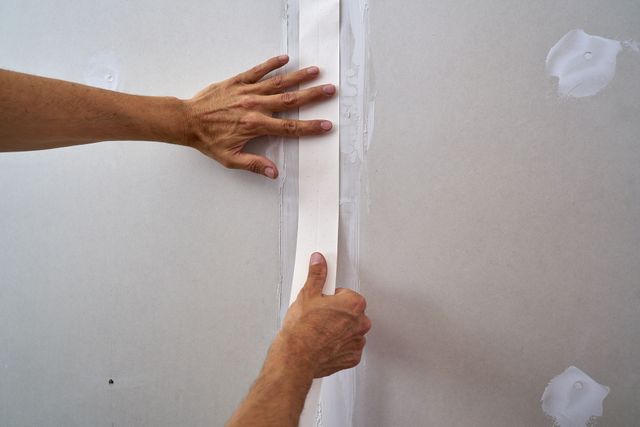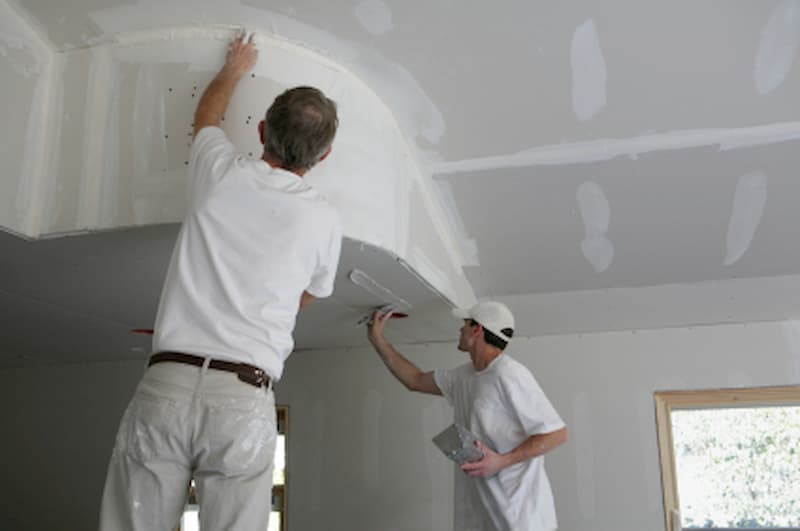Revamp your interiors through expertly handled Drywall Repair Ogden UT and painting solutions.
Discover the very best Practices for Effective Drywall Fixing and Installation
The art of drywall repair and installment calls for a blend of skill and precision. Mastering the crucial devices is crucial for accomplishing a smooth finish. Comprehending the detailed procedure can make a considerable distinction in the outcome. Proper techniques for taping and mudding are likewise critical. What continues to be is the understanding of maintenance that guarantees durability. These components together create a polished end result worth discovering further.

Essential Devices for Drywall Fixing and Setup
When carrying out drywall repair service and installment, having the right devices can considerably improve the performance and high quality of the work. An utility blade is essential for cutting drywall sheets specifically, while a drywall saw can assist in making a lot more detailed cuts. Taping blades, offered in various dimensions, are crucial for applying joint compound efficiently and uniformly. A drywall sander, preferably with a dirt collection attribute, helps attain a refined finish, lowering the need for considerable cleaning.
Furthermore, a measuring tape assurances exact dimensions, and a degree makes sure that setups are straight and plumb. Safety and security equipment, including dirt masks and goggles, should not be neglected to safeguard against debris and dirt. A stud finder aids in locating mounting members, ensuring protected installment. By gearing up oneself with these essential tools, the repair work and installation process ends up being a lot more manageable and leads to a professional-quality end result.

Step-by-Step Overview to Patching Holes
Covering openings in drywall requires a methodical method to guarantee a seamless fixing. First, the location around the opening need to be cleansed and any type of loose debris removed. For little holes, a putty knife can be used to apply a lightweight spackle, pushing it into the hole and smoothing the surface area. After it dries out, sanding is important to develop a level finish. For bigger openings, a spot of drywall might be needed. This entails reducing a piece of drywall slightly bigger than the hole, safeguarding it to the wall with screws, and utilizing joint substance to cover the seams. When the substance dries, it ought to be fined sand smooth. Finally, priming the patched location prior to paint will guarantee an even finish. Following these actions will certainly lead to a professional-looking repair that blends perfectly with the bordering wall.
Strategies for Seamless Drywall Installment
Accomplishing smooth drywall setup needs careful planning and implementation. It is vital to measure and cut drywall sheets accurately to minimize gaps. Using an utility knife, installers need to rack up the board before snapping it along the cut line, making sure clean sides. Effectively lining up the sheets is crucial; starting from the leading and working down assists maintain harmony.
Securing drywall to the studs needs constant spacing, generally every 16 inches, making use of screws as opposed to nails for better hold. This strategy reduces the threat of stands out gradually. Additionally, surprising the seams in between sheets improves structural honesty and decreases the presence of joints.
Using the appropriate density of drywall for particular locations-- such as moisture-resistant kinds in shower rooms-- further adds to a remarkable surface. Adhering to these techniques will certainly result in a smooth and professional-looking setup, setting the stage for the subsequent finishing procedures.
Ending Up Touches: Insulation and Mudding
Ending up touches, such as taping and mudding, play a vital role in attaining a polished drywall surface. Taping entails applying a slim strip of drywall tape over the joints and seams, ensuring a smooth appearance. This process aids protect Learn More against cracks and develops a solid bond in between drywall sheets. It is important to choose the best kind of tape, with paper and fiberglass fit together being one of the most common options.
Mudding, or using joint substance, complies with insulation. This compound fills out gaps and ravel the surface area for an uniform coating. It is generally applied in numerous layers, with each coat requiring to completely dry prior to sanding. Proper technique involves feathering the edges to mix the compound into the surrounding drywall, minimizing exposure.
When finished correctly, mudding and taping boost both the structural and visual stability of the drywall setup, leading to a professional-quality surface.
Tips for Preserving Your Drywall After Installment

In addition, maintaining a constant indoor humidity degree can stop warping or mold development. Making use of a dehumidifier in wet areas, like basements, is recommended. It's likewise beneficial to occasionally paint locations that reveal wear, as this safeguards the underlying product. Finally, when relocating furnishings or setting up fixtures, caution needs to be exercised to prevent harming the drywall. By following these upkeep tips, homeowners can prolong the life of their drywall, securing it remains an eye-catching feature of their insides.
Regularly Asked Inquiries
What Safety And Security Equipment Is Necessary for Drywall Repair Work and Installation?
For drywall repair and setup, essential safety gear consists of safety goggles to protect eyes, dirt masks to stop inhalation of fragments, gloves for hand defense, and knee pads for comfort during extended kneeling. Interior Painting.
Exactly how Do I Identify the Drywall Density Needed for My Project?
To identify the drywall thickness needed for a job, one must take into consideration the wall's architectural demands, regional building ordinance, and the meant use the area, typically choosing for 5/8-inch or 1/2-inch drywall.
Can I Repair Drywall Without Removing Furnishings From the Room?
Yes, drywall can be fixed without removing furnishings from the area. Mindful planning and safety actions can decrease mess, enabling reliable repair services while maintaining surrounding products risk-free from dirt and damages throughout the process.
What Types of Drywall Are Best for Different Settings?
Moisture-resistant drywall is suitable for washrooms and kitchen areas, while soundproof drywall matches shared wall surfaces in homes. Fire-rated drywall is best for garages, see this site and standard drywall functions well as a whole living areas, making certain longevity and suitability for various atmospheres.
How much time Does It Take for Drywall Mud to Dry Completely?
Drywall mud normally takes 24 to two days to dry entirely, relying on elements like moisture and temperature (Interior Painting). Thicker applications might need longer drying out times, while thinner layers can dry much more swiftly. Correct ventilation aids drying
The art of drywall repair service and installation needs a mix of ability and accuracy. When embarking on drywall fixing and installation, having the right tools can substantially improve the effectiveness and quality of the job. An energy blade is necessary for cutting drywall sheets precisely, while a drywall saw can help in making much more detailed cuts. Attaining smooth drywall setup demands mindful planning and execution. Moisture-resistant drywall is ideal for kitchens and washrooms, while soundproof drywall matches shared wall other surfaces in homes.